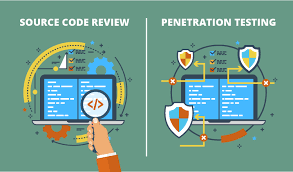Top 5 Common Electrical Issues Found in EICR Inspections

An Electrical Installation Condition Report (EICR) is a crucial part of maintaining electrical safety in both residential and commercial properties. In London, for example, Electrical Testing London services offer these comprehensive inspections to evaluate the condition of electrical installations, ensuring they are safe and up to standard. Common issues often highlighted in these inspections can range from minor inconveniences to serious safety hazards. Understanding these common problems can help property owners take proactive measures to address them. In this blog, we’ll explore the top five electrical issues frequently identified during EICR inspections.
Overloaded Circuits
One of the most prevalent issues discovered during EICR inspections is overloaded circuits. This problem occurs when too many devices are connected to a single circuit, exceeding its designed capacity. Overloading can lead to overheating, which poses a significant fire risk. Inspectors often find that circuits are not only overloaded with too many appliances but also that the wiring may be inadequate to handle the load.
To address this problem, it’s essential to redistribute the load across multiple circuits. Upgrading the circuit breaker or adding additional circuits may be necessary to ensure safe operation. Regularly reviewing the electrical demands and ensuring that your system can handle the load are key steps in preventing overload issues.
Faulty Wiring
Faulty wiring is another common issue identified in EICR inspections. This can include a range of problems such as damaged insulation, exposed wires, or loose connections. Faulty wiring can lead to short circuits, electrical shocks, or even fires. Inspectors look for signs of wear and tear, improper installation, or previous attempts to repair wiring that were not up to standard.
To mitigate these risks, it’s important to ensure that all wiring is inspected and repaired or replaced by a qualified electrician. Regular maintenance and prompt attention to any signs of wiring issues can help maintain electrical safety and performance.
Inadequate Earthing and Bonding
Earthing and bonding are critical components of an electrical system’s safety. Earthing provides a path for electrical faults to safely dissipate into the ground, while bonding ensures that all metallic parts are connected to the earth. Inadequate earthing and bonding can result in dangerous electrical shocks or create fire hazards. Inspectors frequently find issues such as missing or poorly connected earth conductors and inadequate bonding of metallic pipes and structures.
To address these issues, it is crucial to ensure that all earthing and bonding systems are properly installed and maintained. This might involve installing new earth rods, repairing existing connections, or upgrading the bonding of various metal components within the property.
Non-Compliant Consumer Units
Consumer units, commonly known as fuse boxes, are central to managing the electrical supply in a property. An inspection often reveals consumer units that are not compliant with current regulations. Common issues include outdated units that lack modern safety features, such as Residual Current Devices (RCDs) which protect against electric shock.
Upgrading to a compliant consumer unit is essential for ensuring safety and meeting regulatory standards. Modern units provide better protection and are equipped with features to enhance electrical safety. An EICR inspection will often recommend replacing old consumer units with newer models to improve overall safety and reliability.
Poorly Installed Electrical Fixtures
The installation of electrical fixtures such as sockets, switches, and light fittings is another area frequently highlighted during EICR inspections. Issues can range from improper installation to the use of substandard materials. Poorly installed fixtures can cause a variety of problems, including electrical faults, physical hazards, and reduced efficiency of the electrical system.
Ensuring that all electrical fixtures are installed by a qualified electrician and meet current standards is crucial. Regular inspections can help identify and rectify any issues with fixtures, ensuring that they operate safely and efficiently.
Conclusion
An Electrical Installation Condition Report (EICR) serves as an important tool in identifying and addressing potential electrical hazards within a property. Common issues such as overloaded circuits, faulty wiring, inadequate earthing and bonding, non-compliant consumer units, and poorly installed electrical fixtures are frequently uncovered during these inspections. Addressing these issues promptly and effectively is essential for maintaining electrical safety and compliance with regulations.Regular EICR inspections not only help in identifying problems early but also contribute to the overall safety and efficiency of your electrical system. For those seeking reliable inspections and certifications, companies like EICR Cert can provide comprehensive landlord safety certificates. By understanding and addressing these common issues, property owners can ensure a safer living or working environment and avoid potentially dangerous electrical faults. Regular maintenance and adherence to safety standards are key to keeping electrical systems in optimal condition, If you want to stay updated with posts like this, please follow us on THE BUSINESS INSPIRE.





